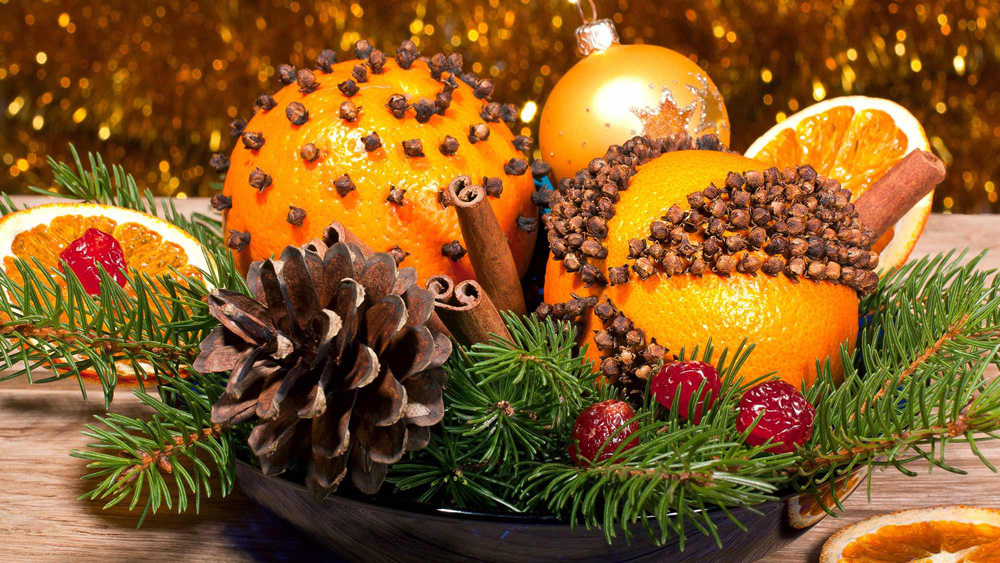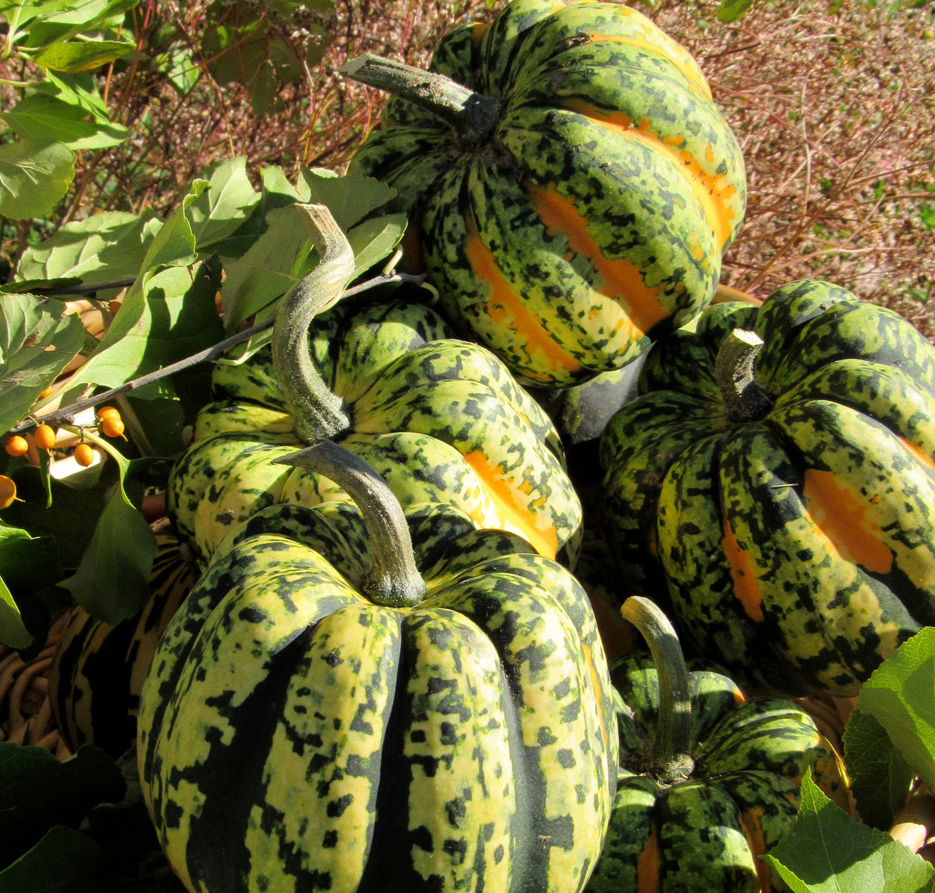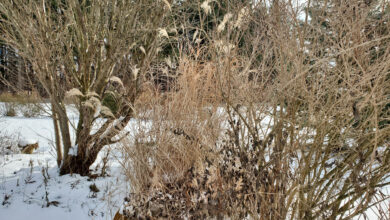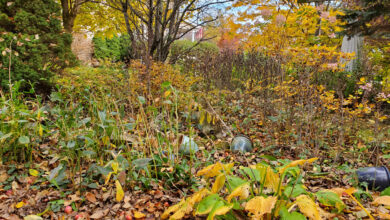Easy flowers for drying
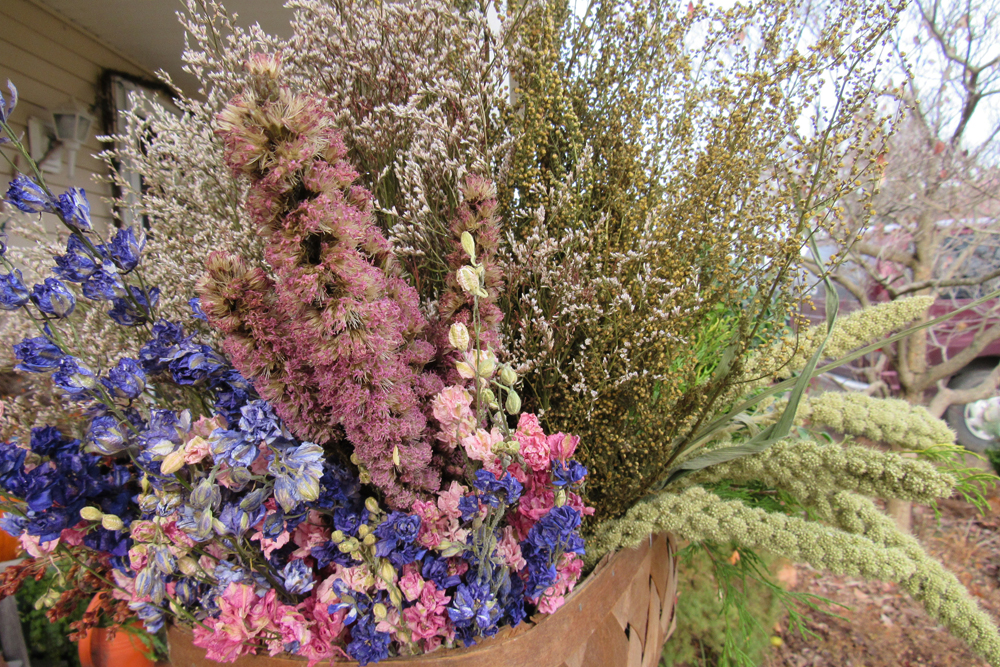
There are many flowers you can grow that are easy to dry. Drying your own flowers is fun and rewarding as the blooms can be used in many ways, such as turned into wreaths and arrangements to help carry you through the dreary months of winter. Some arrangements will last as long as five years.
The drying process for both annual and perennial flowers is simple, but certain types of blooms work best. Flowers known as everlastings have stiff, papery petals or bracts and are the easiest to dry. You can experiment with different blooms; what doesn’t dry well can be added to the compost pile.
After cutting flowers for drying, strip leaves from the stems and group them by flower color and variety. Smaller blooms can be bundled together loosely with rubber bands – about four or five to a bunch – and hung upside down on wire hangers. It is important to create plenty of space between the bunches of flowers for air to circulate. Larger flowers such as hydrangeas are hung singly.
I have had good luck drying hydrangea blooms in a vase without water. They have pretty rigid stems. Ornamental grasses also have rigid stems and can be dried upright in empty jars and vases. Broom corn seed heads are very easy to dry. I simply put them in pails or tall vases to decorate my porch in the autumn and then use the seed heads to decorate inside during the holidays. The seeds can be saved and planted in the spring for a new crop each year. Songbirds also enjoy broom corn seed heads if left near your feeder.
A warm, dry, and dark spot is ideal for drying flowers. Attics work very well, as do barns and sheds. I use a garden shed, but did suffer the loss of some flowers last year during the humid, wet weather we experienced in the mid-to-late summer. I probably should have watched more closely and removed the flowers immediately after they finished drying. Many dried heads were ruined by mold that set in.
Here are suggestions for the easiest flowers to dry. Globe amaranth (Gomphrena globosa) – look for taller varieties such as ‘Strawberry Fields’ or ‘Lavender Lady.’ Hydrangea dries very easily, but if you cut them too soon, they will wilt. Wait until the blooms start to become papery. You can form them into a wreath or garland and let them dry in place. Larkspur (Consolida ajacis) – a personal favorite, larkspur bear narrow spires in lavender, pink, and white. The bright colors hold up well. Cut when about half the florets on the stem have opened. If growing from seed, chill in the fridge for a bit to help encourage germination. Larkspur can be planted in early spring as seeds need cooler temperatures to germinate. Peony (Paeonia) – yes, you can try drying peonies. Cut as the first petals unfurl. It’s the same for roses; harvest before they are fully open – when petals are in a tight spiral. If petals don’t hold, you can dry them and use for potpourri. Statice (Limonium sinuatum) – is a papery annual flower that dries easily and holds its bright colors, which include sky blue, purple, apricot, rose, lemon yellow, and white. Strawflower (Bracteantha bracteata) – straw-like petals come in a wide range of sunset hues. Cut these blooms while they are in bud – they will open as they dry.
Also, try cockscomb, love-lies-bleeding, baby’s breath, lavender, sea holly, and for interesting seed heads – false indigo, love-in-a-mist, and money plant.



